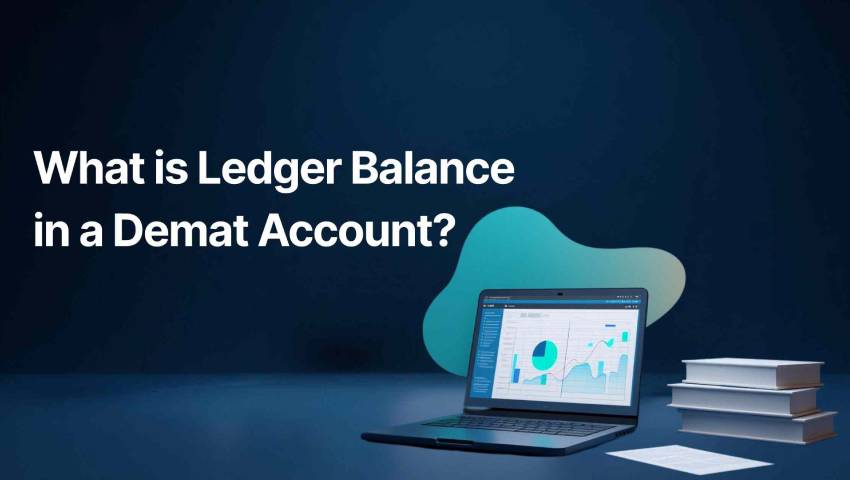
- 03/11/2025
- MyFinanceGyan
- 115 Views
- 0 Likes
- Share Market
What Is Ledger Balance in a Demat Account?
A Demat account is essential for holding securities electronically. To manage it efficiently, investors must understand various terms — one of the most important being the Ledger Balance.
This guide explains what a ledger balance is, how it differs from available balance, and why it matters for smooth trading.
What is Ledger Balance?
The ledger balance represents the settled cash in your trading account linked to your Demat account at the end of the trading day.
It reflects cleared funds after accounting for all completed transactions — purchases, sales, dividends, charges, etc. It does not include unsettled trades or intraday profits.
How It Works?
In India, stock trades follow a T+2 settlement cycle — meaning settlement happens two business days after trade.
Example:
- Monday: You sell shares worth ₹2 lakh.
- Wednesday (T+2): The amount reflects in ledger balance.
Until then, the amount is only visible in available balance, not usable for withdrawal.
Ledger Balance vs. Available Balance:
Why It Matters?
- Prevents using unsettled funds and order rejections.
- Helps plan withdrawals and reinvestments.
- Tracks charges and dividends accurately.
- Confirms funds available for next trade.
Formula:
Ledger Balance = Previous Day Closing + Credits – Debits
Credits: Sale proceeds, dividends, deposits.
Debits: Purchases, brokerage, taxes, withdrawals.
Tips to Manage Efficiently:
- Monitor daily before large trades.
- Avoid trading with unsettled funds.
- Keep buffer for brokerage/taxes.
- Check your broker’s settlement policies.
Conclusion:
Your ledger balance shows your true available cash after all settlements. Understanding it helps investors maintain proper fund flow, avoid penalties, and trade with confidence.
Disclaimer: The content above is intended solely for educational and informational purposes. It does not constitute financial advice or a recommendation to invest in any specific IPO.



